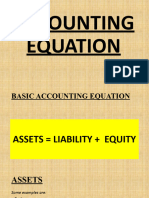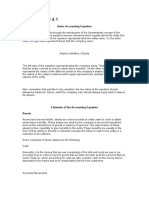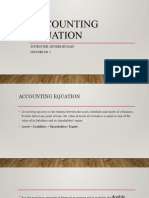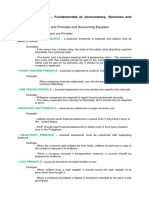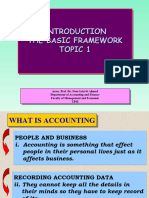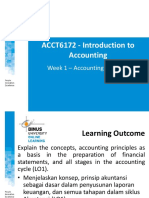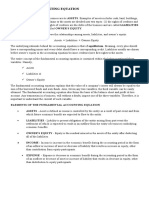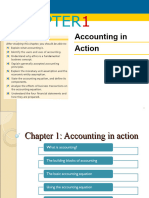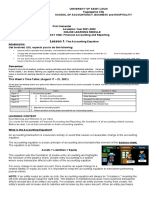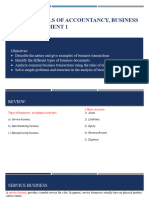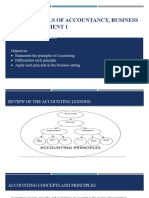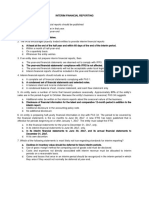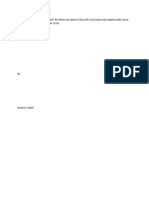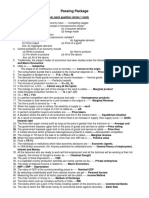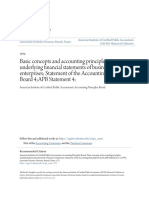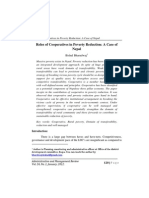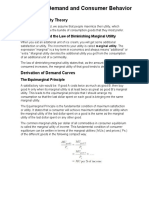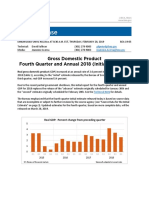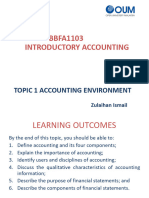0% found this document useful (0 votes)
38 views28 pagesAcc1 Lesson Week7
The accounting equation is Assets = Liabilities + Equity. It represents that a company's assets are equal to the claims on those assets by its creditors and owners. Assets are resources owned to generate future benefits, like cash, inventory, or equipment. Liabilities are debts owed to creditors. Equity reflects the owners' residual claim and consists of their initial capital contributions plus retained earnings. The accounting equation must always balance as every transaction affects at least two accounts. It provides a framework for tracking the financial position of a business entity.
Uploaded by
KeiCopyright
© © All Rights Reserved
We take content rights seriously. If you suspect this is your content, claim it here.
Available Formats
Download as PPTX, PDF, TXT or read online on Scribd
0% found this document useful (0 votes)
38 views28 pagesAcc1 Lesson Week7
The accounting equation is Assets = Liabilities + Equity. It represents that a company's assets are equal to the claims on those assets by its creditors and owners. Assets are resources owned to generate future benefits, like cash, inventory, or equipment. Liabilities are debts owed to creditors. Equity reflects the owners' residual claim and consists of their initial capital contributions plus retained earnings. The accounting equation must always balance as every transaction affects at least two accounts. It provides a framework for tracking the financial position of a business entity.
Uploaded by
KeiCopyright
© © All Rights Reserved
We take content rights seriously. If you suspect this is your content, claim it here.
Available Formats
Download as PPTX, PDF, TXT or read online on Scribd
/ 28
